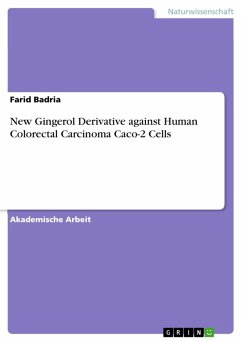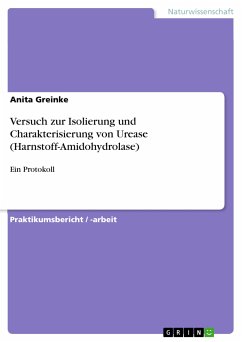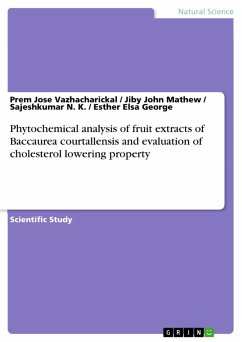Akademische Arbeit aus dem Jahr 2013 im Fachbereich Chemie - Biochemie, , Sprache: Deutsch, Abstract: In this article we report the isolation, characterization and evaluation of in vitro anti-colon cancer activity of a new gingerol derivative, namely (S,E)-5-hydroxy-1-(4-hydroxy-3- methoxyphenyl)tetradec-8-en-3-one, (N6), and a known sesquiterpene (1,2- Dihydroxybisabola-3,10-diene, N7), isolated from Zingiber officinale rhizomes for the first time, together with other five known compounds. 6-gingerol (N1), 8-gingerol (N2), 10- gingerol (N3), 4-gingerol (N4) and 4`-O-methyl-6-gingerol (N5). The isolated compounds were identified using different spectroscopic techniques (1D and 2D-NMR, MS and IR). A modified chromatographic method was established and optimized to isolate the major gingerols (N1, N2, and N3) in grams. Thereafter the cytotoxic activity of the isolated compounds was evaluated against colorectal carcinoma cell line, Caco-2. It was observed that anti-colon cancer activity of N2 was superior to that of 5-FU, the classic reference cytotoxic agent. Additionally, the length of the aliphatic chain in 8-gingerol (N2) is optimum for the anticancer activity and any decrease, as in N1 and N4, or increase, as in N3, in the side chain length leads to gradient decrease in the cytotoxic activity. Following this further, methylation of phenolic OH group (N5), leads to a dramatic decrease in the anticancer activity. Furthermore, loss of aromaticity (N7), results in complete loss of the cytotoxic activity. On the other hand, introducing a p-bond in the aliphatic side chain enhances the anti-cancer activity as depicted in N6. Taken together, the aromaticity, the side chain length as well as the presence of free phenolic group contribute significantly to the anti-colon cancer activity of gingerol and its derivatives. These results open up a new window in the rational design of gingerol-based semisynthetic drugs with improved anticolon cancer activity.
Dieser Download kann aus rechtlichen Gründen nur mit Rechnungsadresse in A, B, BG, CY, CZ, D, DK, EW, E, FIN, F, GR, HR, H, IRL, I, LT, L, LR, M, NL, PL, P, R, S, SLO, SK ausgeliefert werden.









